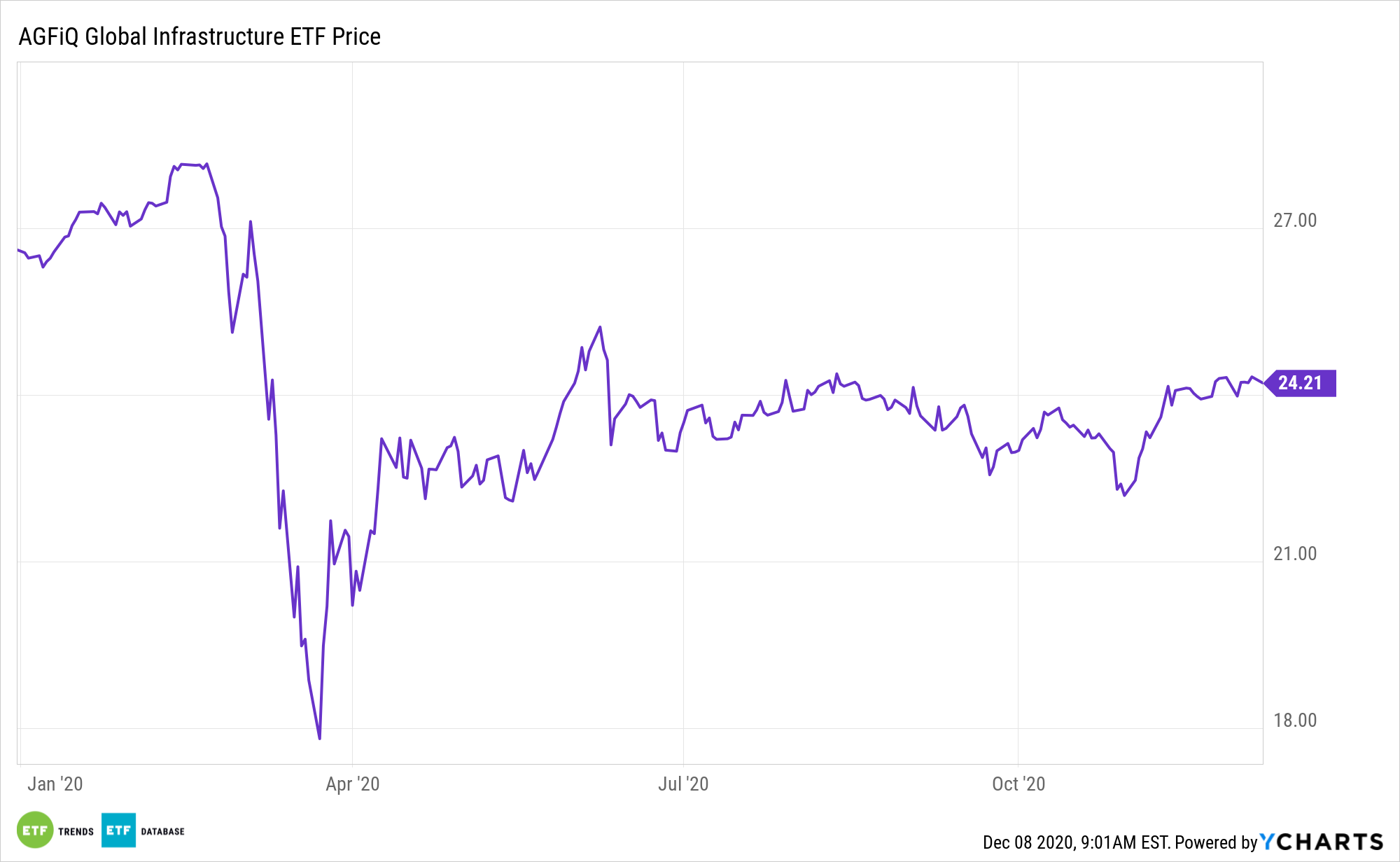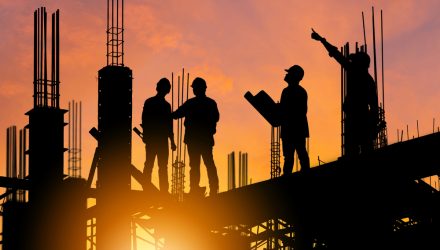In the run-up to Election Day, the AGFiQ Global Infrastructure ETF (GLIF) and other infrastructure assets got plenty of attention. More than a month removed from that day, investors shouldn’t sleep on continued infrastructure optimism.
The infrastructure category has historically offered higher dividend yields than global fixed-income and global equities, along with greater predictability of long-term cash flows. GLIF may be able to capture the growing demands of economic development that are driving more funding into transport, power, and other systems.
“Infrastructure just might be the vehicle that could smash through the political roadblocks in Washington, and perhaps demonstrate that, yes, things can get done. It isn’t dramatic, but maybe we’ve all had enough drama for a while,” reports Gerald Seib for the Wall Street Journal.
The AGFiQ Global Infrastructure ETF uses a multi-factor investment process to seek long-term capital appreciation by investing primarily in global equity securities in the infrastructure industry.
Infrastructure Dominating 2021 and Beyond
Data confirm there are good reasons for investors to consider infrastructure over the coming months. Put simply, spending on these projects needs to increase immediately, and politics must be removed from the equation.
“Everybody agrees the nation’s infrastructure systems are in decline and in need of help. Business and labor leaders both love infrastructure action, because it provides jobs and economic stimulus for an economy still trying to climb out of the coronavirus ditch, as well as a more efficient foundation for the American economy in an increasingly competitive world,” according to the Journal.
With policymakers looking to unleash a massive wave of stimulus onto the U.S. economy and in an effort to save jobs numbers from sliding, infrastructure could be in style as the coronavirus situation, hopefully, eases up. Some data points confirm that some of the stimulus packages should be going toward infrastructure.

The strong, consistent demand for infrastructure has delivered stable, repeatable cash flows to investors. Meanwhile, population growth, aging infrastructure, and constrained government budgets are creating opportunities for the private sector. The high cost of entering the infrastructure business also limits competition, providing a wide economic moat for those already in the field.
“Blue states with urban areas are in dire need of help for mass transit systems that have been laid low by the pandemic, so they would love it,” reports the Journal. “So would red states with a need for rural road improvements and, more than ever, a big expansion of broadband access to help more residents move into the new online work environment.”
For more alternative investing ideas, visit our Alternatives Channel.
The opinions and forecasts expressed herein are solely those of Tom Lydon, and may not actually come to pass. Information on this site should not be used or construed as an offer to sell, a solicitation of an offer to buy, or a recommendation for any product.








